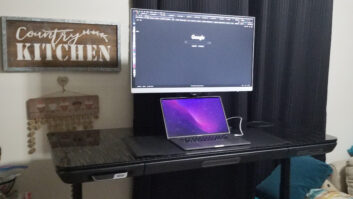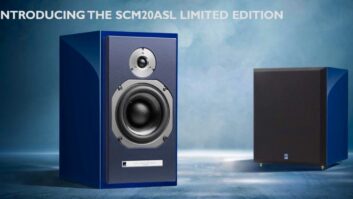The HomePlug Powerline Alliance plans to develop a next-generation powerline-network standard that will simultaneously stream multiple standard-definition (SD) and high-definition (HD) video programs without requiring the installation of new wires.
The alliance expects to achieve a data rate of about 100Mbps, which is also supported by the 1394b home-network standard running over CAT5 cable. The 1394b standard, however, is expected to be available in structured-wiring products in mid-2003, while the new powerline standard will take 18-24 months to complete. Products equipped with the powerline standard, dubbed HomePlug AV, could be out about a year later in stores, in early to late 2005, said alliance president Tom Reed.
Besides increasing throughput, HomePlug AV would increase HomePlug’s penetration in the consumer electronics market. Currently, all of the dozen or more products available at retail with HomePlug 1.0’s 14Mbps technology are designed for computer networking, said Reed. Consumers, however, can connect $99 Ethernet-to-HomePlug bridges to a growing number of Ethernet-equipped CE devices, including Internet audio receivers, and at CES, Reed said he expects CE companies to introduce HomePlug-equipped audio products and security cameras. The 1.0 spec’s quality of service (QoS) technology, he explained, “is good for audio, voice, and low-frame-rate video streamed over a broadband Internet connection.”
The upgraded spec, however, will be so robust, Reed said, “I see it as a coax replacement so you don’t have to put a TV where the coax outlet is.” That will open up the market for under-cabinet kitchen TVs, he said. In fact, within five to six years after the spec is finalized, every TV will be equipped with a HomePlug AV chipset, he claimed.
“We know we can tweak the current standard for 100Mbps, but the real work will be on the quality of service side,” Reed said. He called the effort “a significant technological undertaking,” but he said he’s “very confident” it can be done in 18-24 months.
A request for proposals will go out in the coming months to companies interested in submitting their technologies. The RFP will specify that at a minimum, HomePlug AV will have to “coexist” with 1.0, making it possible to bridges between AV- and 1.0-eqipped products, Reed said. The alliance would prefer full backward compatibility with 1.0 products, but not at the expense of the “number one goal of creating a credible video system,” he said.
Bandwidth of 100Mbps would allow for the simultaneous streaming of one HD program and five to six SD programs, or two to three HD streams simultaneous with sharing an Internet connection, printer connection and several audio programs throughout the house, according to a Texas Instruments backgrounder on 1394b.













